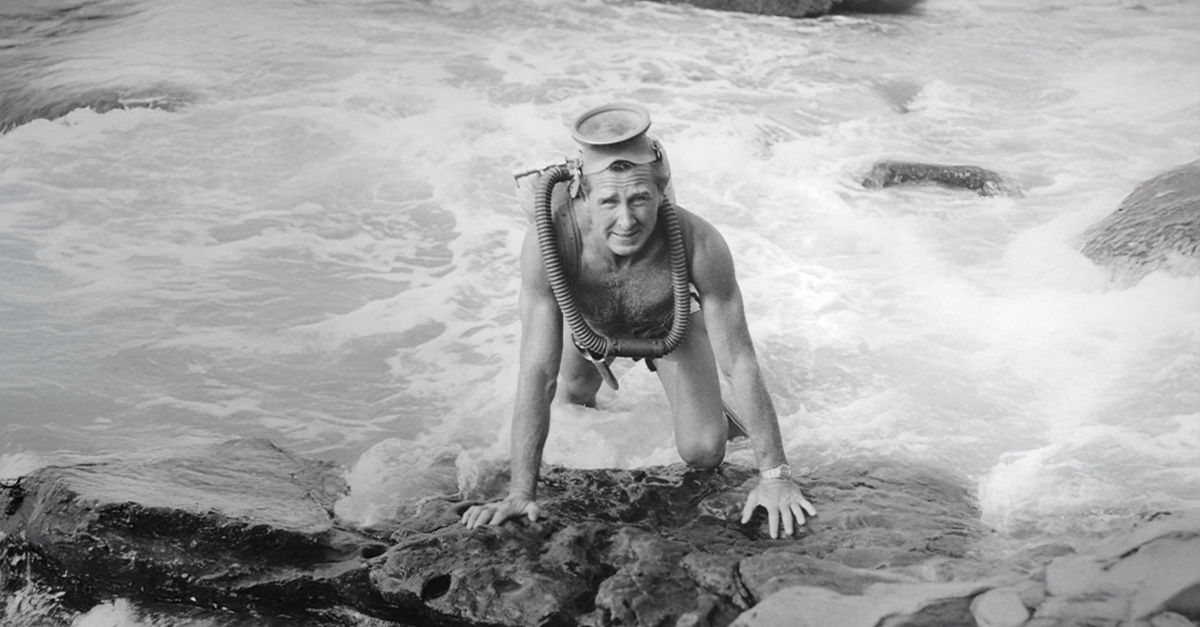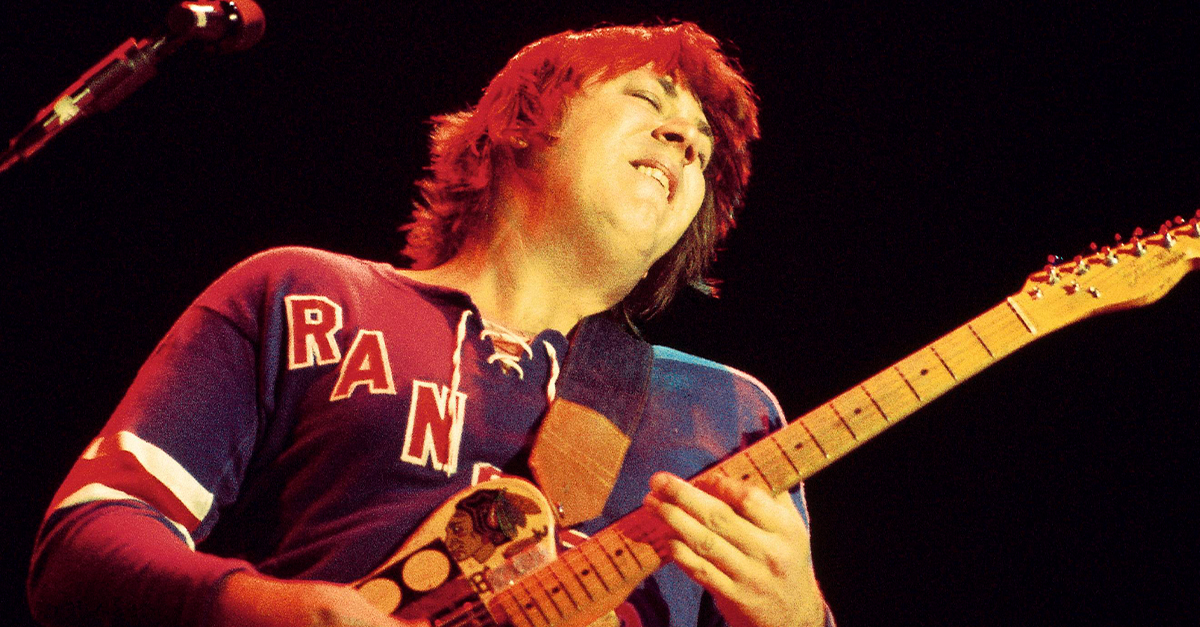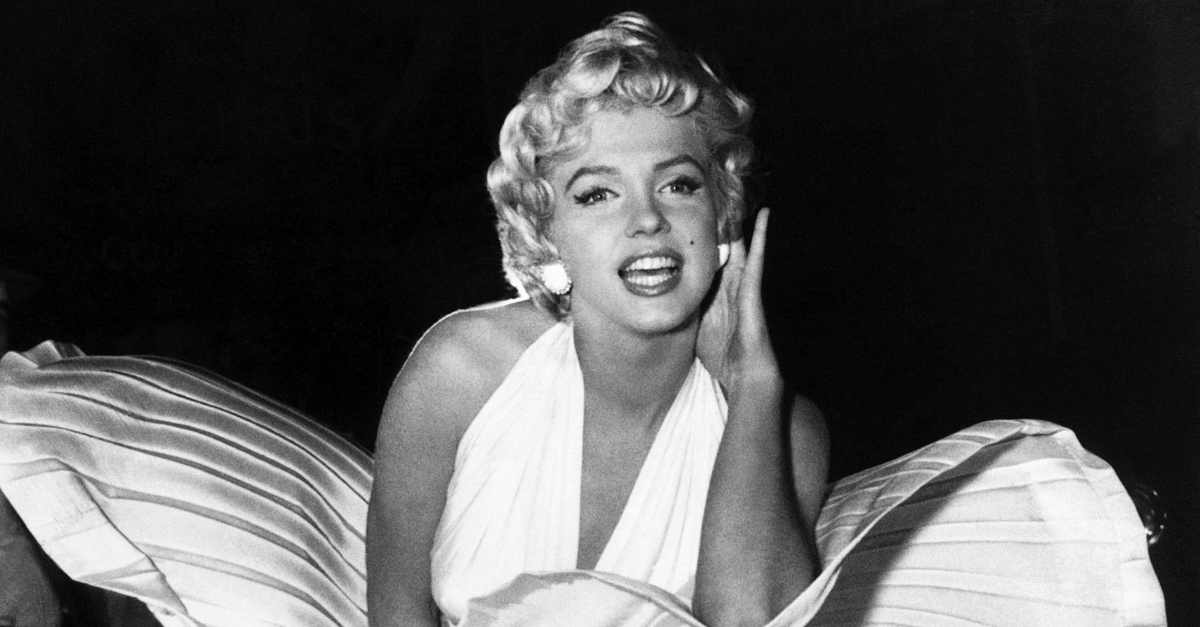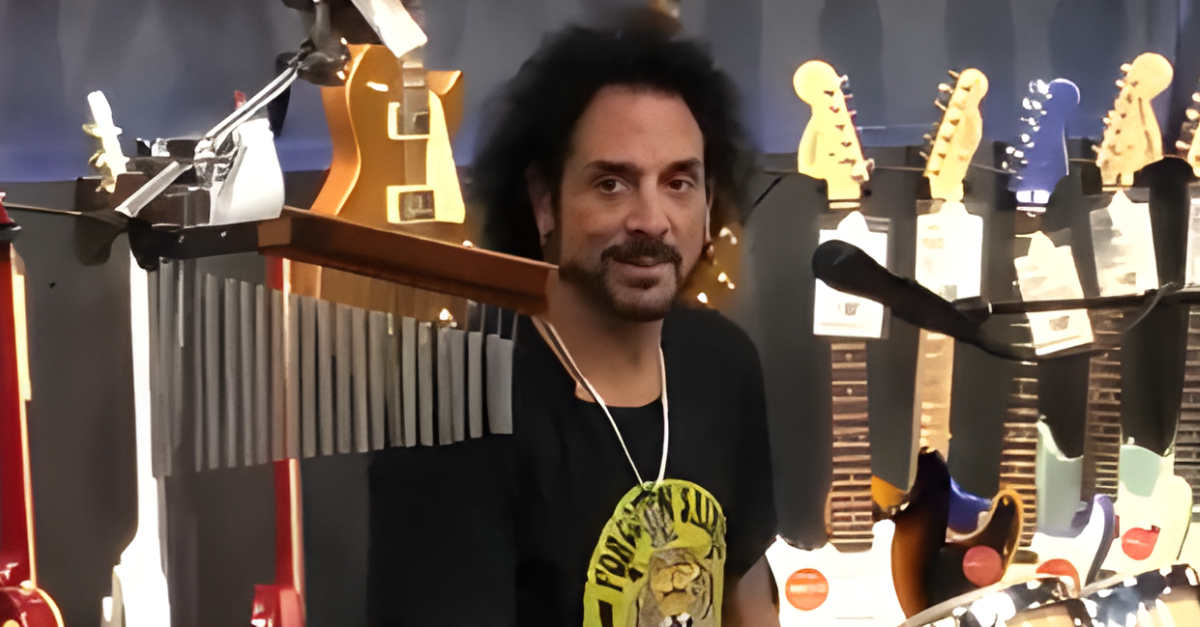In Uncharted Waters
In 1958, television audiences were plunged into the underwater realm of Sea Hunt, a syndicated adventure series that starred Lloyd Bridges. The show was the first to bring drama from below the waves to living rooms across America, lifting scuba diving into popular culture in the process. Not only was it an entertaining show, it turned into the defining role of Bridges’ career, shaping his legacy.
Bridges Before Sea Hunt
Before he donned a wetsuit, Lloyd Bridges was a longtime Hollywood contract player, appearing in films like High Noon (1952). But by the mid-50s, his career had gone into a holding pattern. He was also on the Hollywood blacklist of actors after admitting his left-wing affiliations to the House Un-American Activities Committe. He leaped at the chance to do Sea Hunt; the series gave him steady work and introduced him to a new generation of fans.
 United Artists, High Noon (1952)
United Artists, High Noon (1952)
A Hero Of The Deep
As Mike Nelson, Bridges played a retired Navy frogman turned freelance scuba diver. Nelson was tough but likable as he solved mysteries, saved lives, and took on underwater villains for episode after episode. It was a unique role for the TV of that era, and it gave audiences a different hero than the usual ones from the Wild West.
 Ziv Television Programs, Sea Hunt (1958-1961)
Ziv Television Programs, Sea Hunt (1958-1961)
He Had The Skill And The Passion
Bridges learned to scuba dive and became truly passionate about the ocean. His diving gave the show credibility, with Bridges often carrying out his own underwater stunts. That authenticity was what drew in audiences, and made the series seem fresh and daring; Sea Hunt became a very popular syndication series.
 Florida Memory, Wikimedia Commons
Florida Memory, Wikimedia Commons
He Had A Turning Point To His Career
The show turned Bridges’ career around. Once typecast in forgettable supporting roles, he now had a starring role to give him far more public visibility. The series’ 155 episodes became his television legacy and brought him a steady stream of acting opportunities in the decades afterward. Without Sea Hunt, Bridges’ career might not have got that second wind it needed. But Bridges had plenty of help.
 Ziv Television Programs, Sea Hunt (1958-1961)
Ziv Television Programs, Sea Hunt (1958-1961)
He Had A Great Supporting Cast
It was Bridges who carried the series, but the supporting cast and guest stars helped add interesting layers to the stories. Future stars like Leonard Nimoy, Bruce Dern, Larry Hagman, and Jack Nicholson made early guest appearances. Lloyd’s sons Beau and Jeff Bridges also had childhood appearances on several episodes of the show.
 Ziv Television Programs, Sea Hunt (1958-1961)
Ziv Television Programs, Sea Hunt (1958-1961)
A Challenging Show To Shoot
Filming underwater sequences in the late 50s was a pretty new affair. Cameras had to be specially housed, and communication between the actors underwater was almost impossible. Directors had to use hand signals and do rehearsals on dry land. Even with all these limitations, the production team worked out new techniques that made Sea Hunt a laboratory for TV technology.
 Ziv Television Programs, Sea Hunt (1958-1961)
Ziv Television Programs, Sea Hunt (1958-1961)
Authenticity Under Pressure
There was no shortage of scenes featuring encounters with sharks, shipwrecks, and staged underwater battles. Bridges often had to hold his breath for long takes, which created real tension. Viewers at home were able to sense the danger of the situations, heightening the drama. It was this sense of authenticity that kept Sea Hunt ahead of its peers, and brought it extended success in its syndication run.
 Ziv Television Programs, Sea Hunt (1958-1961)
Ziv Television Programs, Sea Hunt (1958-1961)
Divers And Stunt Doubles In Sea Hunt
Sea Hunt relied on a team of expert divers and stunt doubles to properly act out its underwater drama. Zale Parry and Courtney Brown trained Lloyd Bridges in scuba diving; Brown served as his stunt double. Albert Tillman and Jon Lindbergh also did a lot of underwater work for the series, while Wende Wagner, at age 18, appeared as a female stunt double in certain episodes.
 Ziv Television Programs, Sea Hunt (1958-1961)
Ziv Television Programs, Sea Hunt (1958-1961)
An Immersive Experience
Veteran stunt diver Ricou Browning performed a lot of the underwater sequences in the second season. Underwater cinematographer Lamar Boren shot nearly all of the show’s aquatic scenes; supplemented by judicious use of stock footage, it brought a surprising sense of realism to the show.
 Florida Memory, Wikimedia Commons
Florida Memory, Wikimedia Commons
Educational Value
As entertaining as the series was, it also was educational for viewers interested in learning about oceanography and marine life. Children were especially fascinated, and the show inspired many people to take up diving as a hobby. The program’s solid combination of adventure and education helped make diving mainstream in American culture. Scuba gear sales climbed higher as a result.
 Ziv Television Programs, Sea Hunt (1958-1961)
Ziv Television Programs, Sea Hunt (1958-1961)
The Ocean Was The Real Star
The ocean played an amazing role in the series. Exotic locations, underwater caves, and shipwrecks gave each episode an atmosphere of mystery and unpredictability. The ocean’s depths were the raw material for endless storylines, reflecting the fascination and danger of the deep.
A Show Ahead Of Its Time
Few shows in the 50s dared to build stories almost entirely around underwater sequences. Sea Hunt pioneered the new frontier, using scuba diving for its basic narrative backdrop. The show was years ahead of its time in that respect, influencing later action-adventure shows that relied on exotic settings and stunts.
 Ziv Television Programs, Sea Hunt (1958-1961)
Ziv Television Programs, Sea Hunt (1958-1961)
Global Influence
As well as Sea Hunt did in the United States, it was also popular internationally. Its themes of adventure and heroism went across borders, making Lloyd Bridges a global star. The show helped to inspire diving clubs around the world, contributing to the growth in scuba’s worldwide popularity.
 U.S. Coast Guard Auxiliary, Wikimedia Commons
U.S. Coast Guard Auxiliary, Wikimedia Commons
Sponsorship And Commercial Impact
Sea Hunt was had sponsorships with major brands, including watchmaker Rolex. Product placement, like the Rolex Submariner on Bridges’ wrist, began to show diving’s fashionable appeal.
 Falcon® Photography from France, France, Wikimedia Commons
Falcon® Photography from France, France, Wikimedia Commons
Criticisms And Limitations
Despite Sea Hunt’s success, the show was at times on the receiving end of criticism for its formulaic episodes, which often followed the predictable plot of Mike Nelson saving the day. But audiences enjoyed the consistency and familiarity of this basic blueprint. What critics wrote off as repetitive, fans saw as reliable. It was a standard formula that many later shows put to great use.
 Ziv Television Programs, Sea Hunt (1958-1961)
Ziv Television Programs, Sea Hunt (1958-1961)
Impact On Diving Industry
The popularity of Sea Hunt influenced the growth of recreational scuba diving in the 60s. Equipment sales ballooned up, and thousands got into the sport after watching Mike Nelson’s adventures. Bridges himself became an ambassador for scuba diving, a reflection of the show’s real-world influence beyond the TV screen.
 Ziv Television Programs, Sea Hunt (1958-1961)
Ziv Television Programs, Sea Hunt (1958-1961)
He Loved The Ocean
Bridges cultivated a lifelong love of the sea through his work on the series. He went right on diving after Sea Hunt ended and encouraged his sons, Beau and Jeff Bridges, to respect and appreciate the ocean. The show left Lloyd Bridges a profoundly changed man, and a legacy that extended beyond Hollywood into broader environmental awareness.
 Tom Korman Assoc., Wikimedia Commons
Tom Korman Assoc., Wikimedia Commons
Career After Sea Hunt
Though he was forever linked with Mike Nelson, Bridges went on to a very successful second career, often parodying his Sea Hunt image. He showed his versatility in comedies like Airplane! (1980) but no matter what roles he played later, Bridges always acknowledged that his career revival owed it all to Sea Hunt.
 Paramount Pictures, Airplane! (1980)
Paramount Pictures, Airplane! (1980)
Influence On Future Shows
Sea Hunt was an inspiration for later marine productions like Flipper and The Undersea World of Jacques Cousteau. Its mix of adventure and pure aquatic visual charm created the potential for a whole new style of documentary entertainment. But Sea Hunt also proved that the ocean could sustain dramatic storytelling, a lesson that was learned to great effect in later, more technically advanced productions.
 Metromedia Producers Corporation, The Undersea World of Jacques Cousteau (1968-1976)
Metromedia Producers Corporation, The Undersea World of Jacques Cousteau (1968-1976)
Bridges’ TV Legacy
Lloyd Bridges’ television legacy rests squarely on his work in Sea Hunt. While he worked in many genres, this was the role that secured his reputation. It gave him respect as a leading man and longevity in Hollywood. His underwater work was a milestone in TV history, and shows how one role can totally turn a performer’s career around.
Oceanic Depths
Sea Hunt represented a major shift in adventure programming. It breathed new life into Lloyd Bridges’ flagging career, inspired millions to explore the sea, and pushed the boundaries of what could be done in television.
 Ziv Television Programs, Sea Hunt (1958-1961)
Ziv Television Programs, Sea Hunt (1958-1961)
You May Also Like:
The Legendary Comedy Career Of Phil Silvers
The Long Career and Too-Short Life of TV’s Fugitive, David Janssen










